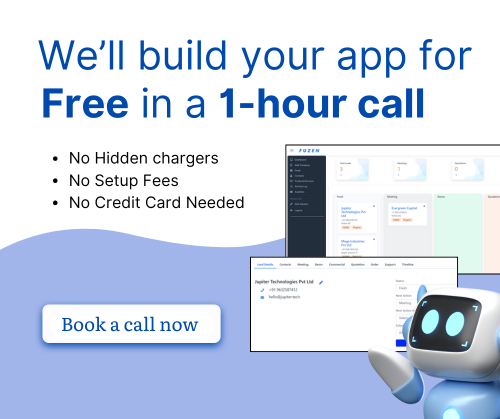In today’s rapidly evolving software landscape, selecting the appropriate programming language for your SaaS app can significantly impact its performance, scalability, and maintainability. Whether you are a budding entrepreneur or an experienced developer, understanding the best programming languages for SaaS is crucial for your project's success.
his article will explore the top SaaS programming language contenders in the field and provide insights to help you make an informed decision.
What to Consider When Choosing a SaaS Programming Language
When you're picking a programming language for your SaaS application, there are several key factors you need to think about. Below are some of the most important:
- Scalability: Ensure the language can handle growing numbers of users and data.
- Performance: Evaluate the execution speed and efficiency of the language.
- Ecosystem and Libraries: Check for the availability of robust libraries and frameworks.
- Community Support: Active communities can offer valuable resources and support.
- Learning Curve: Consider the ease of learning for onboarding new developers.
- Security: Look for built-in features for vulnerability management and data protection.
Top Programming Languages for SaaS Development
If you're diving into SaaS development, you'll want to know the best programming languages to use. Each language has its unique benefits and features. Let's break down the top contenders.
1. JavaScript/TypeScript
Why It’s Popular:
- Versatility: Used for both client-side and server-side development (Node.js).
- Key Features:
- Event-driven: Handles multiple events efficiently.
- Non-blocking I/O: Allows asynchronous processing, enhancing performance.
- Large Ecosystem: Extensive libraries and frameworks (React, Angular, Vue).
2. Python
Why It’s Popular:
- Simplistic Syntax: Easy to read and write, making it beginner-friendly.
- Strong Support for Data Analytics and Machine Learning: Widely used in these fields.
- Key Features:
- Extensive Libraries: Django, Flask for web development; TensorFlow, PyTorch for ML.
- Readable Code: Emphasizes readability and simplicity.
- Vast Community Support: Large, active community for troubleshooting and development.
3. Java
Why It’s Popular:
- Platform Independence: “Write Once, Run Anywhere” capability.
- Strong Security Features: Built-in security measures.
- Key Features:
- Robust Ecosystem: Comprehensive set of APIs and libraries.
- Multi-threading: Supports concurrent processing for better performance.
- Exceptional Performance: Ideal for large-scale applications.
4. Ruby
Why It’s Popular:
- Rapid Prototyping and Development: Favored for its efficiency and speed in development.
- Key Features:
- Rails Framework: Simplifies web development, providing a convention over configuration approach.
- Simplicity and Elegance: Clean, readable syntax.
5. PHP
Why It’s Popular:
- Dominance in Web Development: Powers a significant portion of the web, including major CMSs like WordPress.
- Key Features:
- Budget-friendly: Cost-effective development and hosting.
- Wide Hosting Support: Supported by most web hosting providers.
- Extensive Frameworks: Laravel, Symfony for building robust web applications.
Industry Examples
JavaScript/TypeScript
Netflix uses Node.js to manage millions of users daily. Node.js allows for fast and scalable network applications. Its asynchronous, event-driven model helps Netflix handle massive amounts of data efficiently.
Python
Dropbox relies heavily on Python for its cloud storage systems. Python's simplicity and readability assist in managing its extensive infrastructure. The language allows quick development cycles, making it ideal for startups like Dropbox during their early growth stages.
Java
LinkedIn's backend infrastructure is a testament to Java's reliability and performance. Java offers robustness and scalability, essential for a social network with millions of active users. The language’s strong memory management contributes to its backend efficiency.
Ruby
Basecamp accelerated its development using Ruby on Rails. Rails' convention-over-configuration philosophy means fewer decisions for developers, streamlining the development process. This efficiency helped Basecamp quickly iterate and bring its product to market.
PHP
WordPress dominates the CMS market thanks to PHP. PHP’s server-side scripting capabilities make it easy to develop and deploy websites. WordPress leverages PHP’s flexibility, allowing users to customize and manage their sites with ease.
No-Code SaaS Development
If you’re looking for an alternative approach to traditional coding, no-code platforms like Fuzen are gaining traction for SaaS development. Fuzen is designed specifically for building SaaS applications without requiring extensive coding knowledge.
Why Consider No-Code Platforms:
- Ease of Use: Simplifies the development process with intuitive interfaces and pre-built templates.
- Rapid Development: Speeds up the creation and deployment of SaaS applications.
- Cost-Effective: Reduces development and maintenance costs by eliminating the need for specialized coding skills.
Fuzen’s Key Features:
- Designed for SaaS: Tailored tools and components to create scalable SaaS applications.
- Flexible Customization: Allows for intuitive design and functionality adjustments.
- Integration Capabilities: Easily integrates with various third-party services and APIs.
- User-Friendly: Ideal for those with minimal technical background.
- Scalability: Supports growth and scaling with ease.
- Accelerated Time-to-Market: Quickly launch your SaaS product without extensive coding.
Conclusion - Making the Final Decision
Choosing the right SaaS programming language hinges on your specific project needs, scalability expectations, and the development team's expertise. While there's no one-size-fits-all answer, understanding the strengths and limitations of each language can guide you toward a more informed decision. You can also explore no-code alternatives like Fuzen to escape the hard work.
Assess your project requirements, and start building your robust, scalable SaaS application today.

Pushkar is a seasoned SaaS entrepreneur. A graduate from IIT Bombay, Pushkar has been building and scaling SaaS / micro SaaS ventures since early 2010s. When he witnesses the struggle of non technical micro SaaS entrepreneurs first hand, he decided to build Fuzen as a nocode solution to help these micro SaaS builders.


